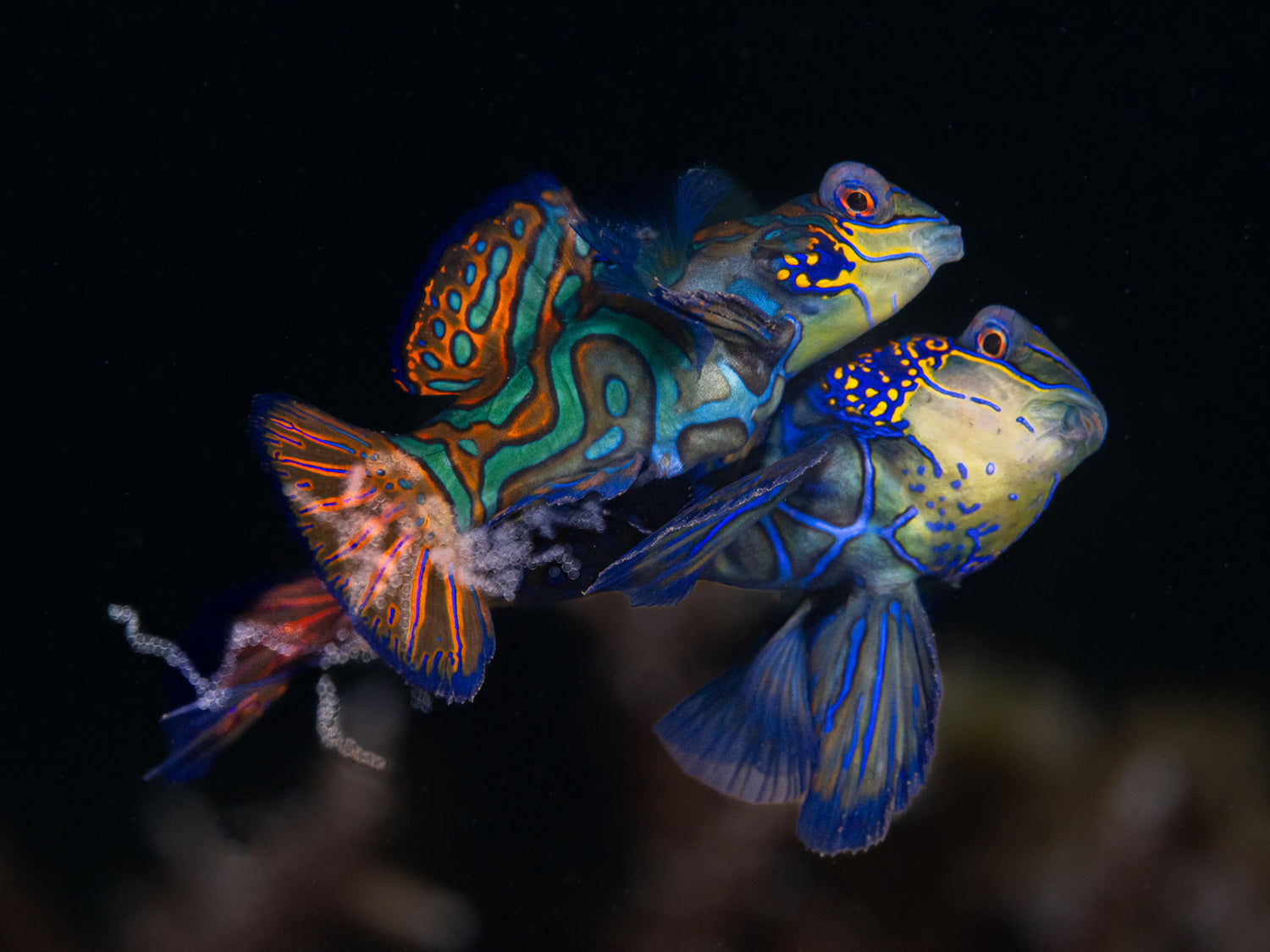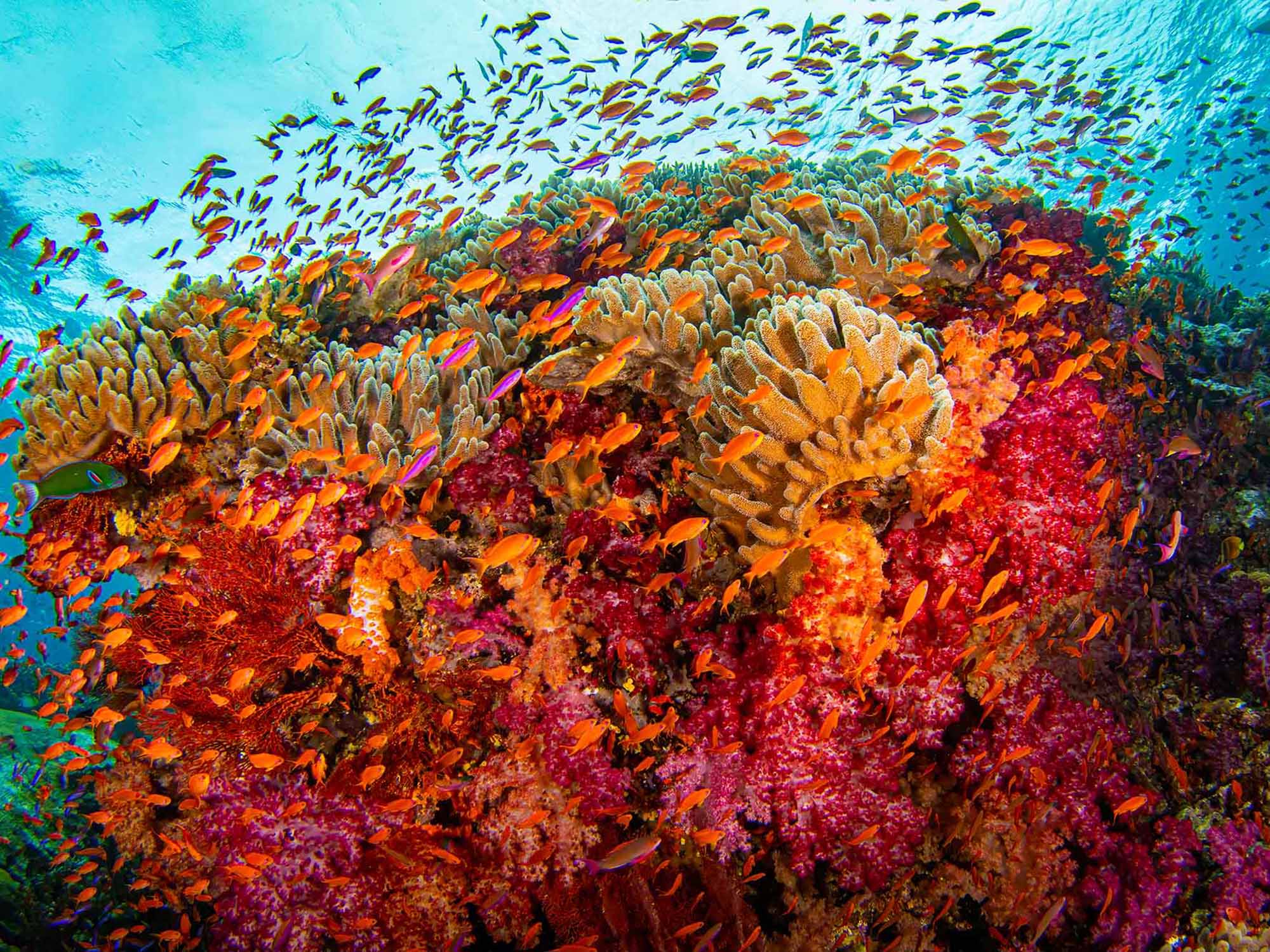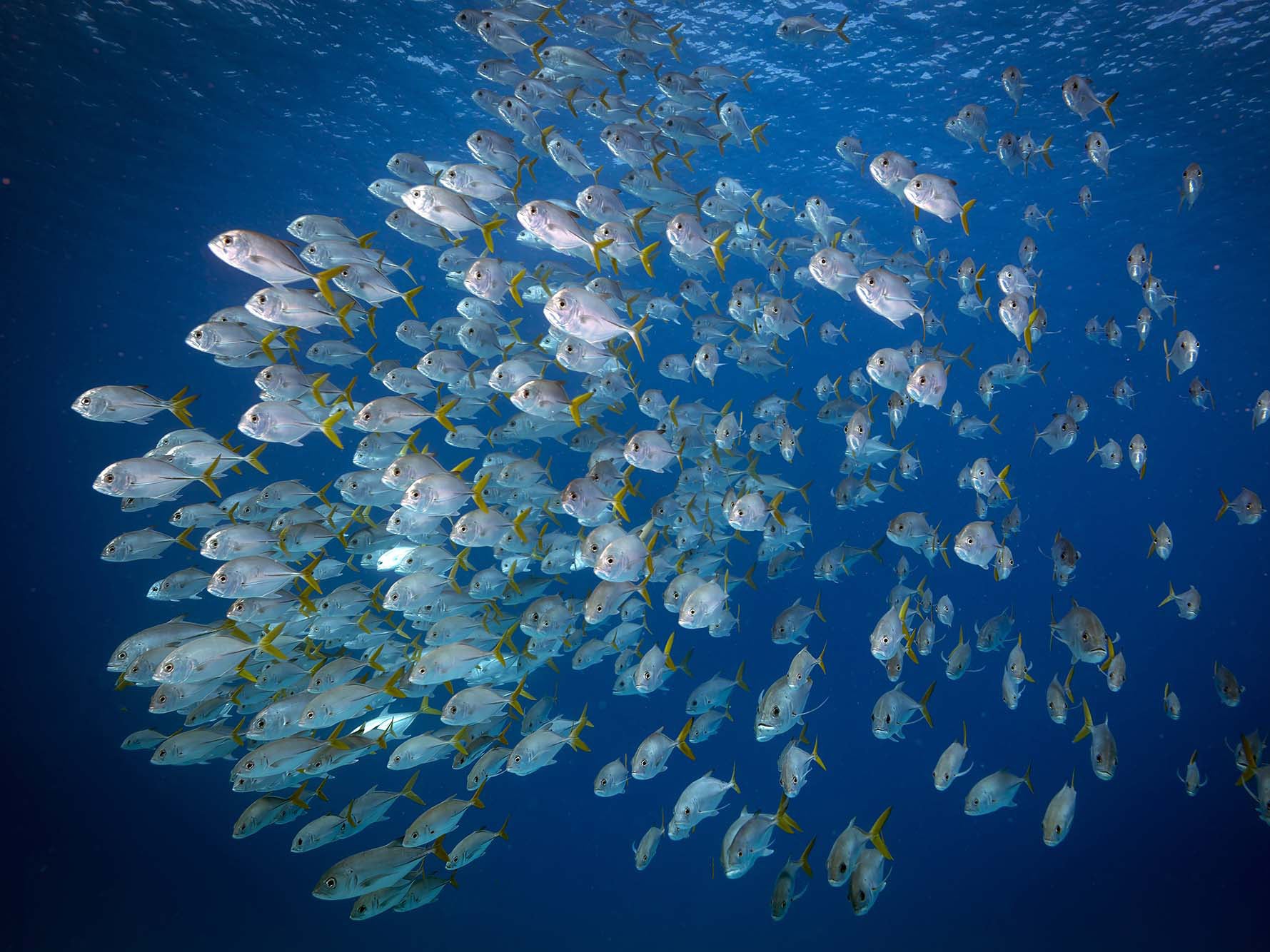By Nicolas Remy
All photos © 2024 Nicolas Remy
With their vivid colours and peculiar shape, mandarinfish are amongst of the most elegant critters in the ocean, no wonder they’re also called the psychedelic fish! You’re unlikely to stumble upon them randomly though, as they spend a lot of their time in between branches of staghorn corals. Your best chance to see and photograph these elusive animals is towards dusk, when female and male mandarinfish gather up on near the top of branching corals, to engage into courtship and eventually spawn.

A mandarin fish emerges from the corals at dusk. Nikon Z9, Nikon Z 105mm MC lens, 1x Ikelite DS230 strobe. 1/200, F/14, ISO 1000.
First, you will notice the small females popping out across a patch of corals, and a larger male going from one female to the other, possibly chasing a rival male here and then. They are not mating just yet, but seeing where the fish are located gives you an idea of your subject distance, so that you can start adjusting your lighting and camera settings.
Care must be taken not to spook the fish and interrupt the courtship process; if you feel the need to switch-on a light to see what is happening, use a red focus light, as these are much less disruptive to fish life, than a regular white light can be.
Soon enough, the “show” will begin: a male mandarin fish will go to one of the females, and they will slowly start swimming upwards together, cheek-against-cheek, in a rotating motion. Don’t rush-in taking photos: this can interrupt the “dance” and the fish will separate without spawning. Instead, let the love-birds swim up for a couple of seconds, to a point where their excitement will be so high that they will continue swimming up and spawn no matter what, and from that point you can start taking photos with flash. In any case, follow the guidance from your dive operator.

Mandarinfish swimming-up, cheek against cheek.
Nikon Z9, Nikon Z 105mm MC lens, 1x Ikelite DS230 strobe. 1/200, F/14, ISO 1000.
The fish will typically swim up a little more, to a maximum of 3 ft (1m) above the corals, and in a split second it will all happen. The female will release a string of clear eggs, instantly fertilized by the male, and the fish will separate, both dashing down, back to the safety of the coral reef.
The male will then repeat the same process with every female in the vicinity, I have typically seen spawning 5-6 times in a dive, when going for Mandarinfish.
A few months ago, I did two mandarin dives while staying at Lembeh Resort (North Sulawesi, Indonesia), with a goal to capture the peak of the action, where the eggs are visible near the two Mandarin fish.

Even if you time your shot well, the mandarin fish won’t always be facing your camera, so be prepared to try several times.
Nikon Z9, Nikon Z 105mm MC lens, 1x Ikelite DS230 strobe. 1/200, F/11, ISO 500.
This is one of the few situations where you really need high-speed bursts underwater, so I picked my trusty Ikelite DS230. I know the DS230 can comfortably handle half-second bursts at 10 frames-per-second at 12% power (-3 setting). During these dives, you can’t always be close to the action and I had to crop up to 50% off the frame, despite using a 105mm macro lens. To make sure I could keep the strobe power low (which is also nicer to the mandarin fish!). I would set my ISO value between ISO 500 and ISO 1250, which really is a no-brainer given the image quality of recent full frame cameras.
One final tip if you’re looking to capture the eggs release: use one strobe rather than two. This will result in a more contrasted photo, with the translucent eggs being easier to tell apart.

Finally, after photographing a few egg releases, I got the shot I was after! Nikon Z9, Nikon Z 105mm MC lens, 1x Ikelite DS230 strobe. 1/200, F/11, ISO 500.
Additional Reading
Macro in Lembeh Strait with the Nikon 60mm and Kenko 1.4x Teleconverter
Mandarinfish Underwater Camera Settings and Technique
Sea Turtle Portraits with DS230 Strobes
BURST shooting // Using Drive Mode to your advantage underwater [VIDEO]
 Nicolas Remy is an Australia-based pro shooter and founder of online underwater photography club & school The Underwater Club. His images have been widely published in print and digital media, and have won over 35 international photo awards. Read more and view his portfolio on Nicolas' website and follow him on Instagram @nicolaslenaremy.
Nicolas Remy is an Australia-based pro shooter and founder of online underwater photography club & school The Underwater Club. His images have been widely published in print and digital media, and have won over 35 international photo awards. Read more and view his portfolio on Nicolas' website and follow him on Instagram @nicolaslenaremy.













